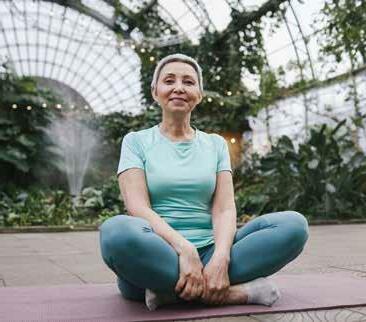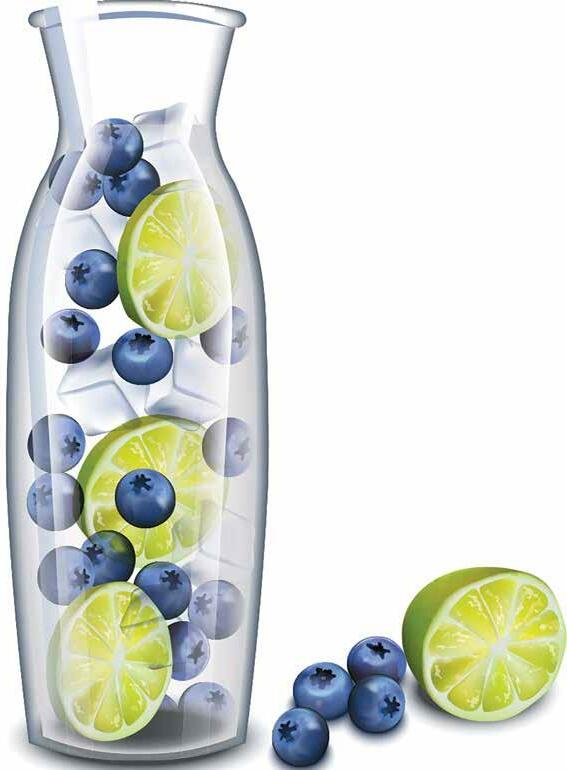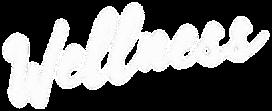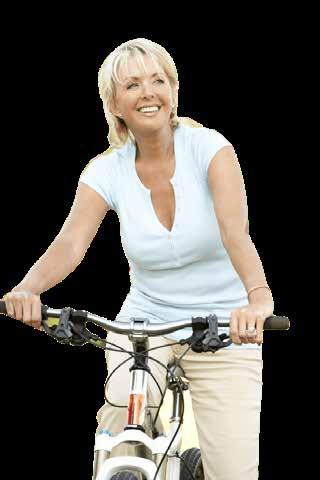
9 minute read
THE MANY FACETS OF HEALING
by Meagan Good
The concept of healing may be an abstract concept in some ways and can even invoke a sense of judgment, so it’s important to recognize that everyone’s journey and goals are different. Healing mentally and emotionally is an internal process, so it’s not easily measured, but there are some general characteristics related to the concept of connection to self, others and something greater. Pain often occurs because of broken connections, so healing must take place by repairing them.
Advertisement
HAVING A LOVING CONNECTION TO SELF: It is
important to have a healthy and loving relationship with ourself. For so many mental health struggles, the deeper issue often surrounds self-hatred, self-doubt, low self-worth or lack of trust in self. When we feel these emotions, they often manifest as depression, impulsivity or emotional instability. On the other hand, healthy connection to self often looks like: • Engaging in self-care as needed. Not just chocolate and spadays, but making sure we are meeting the needs of our body, mind, soul and spirit on a regular basis, and attuned enough to our own self to recognize our needs. • The ability to sit quietly, compassionately and curiously with our own thoughts. Dr. Caroline Leaf calls this the “thinker mindset”, and many call it mindfulness, or noticing a thought or feeling that arises and staying with it with grace and kindness, instead of judgment.
CREATING AND MAINTAINING HEALTHY
CONNECTIONS TO OTHERS: “Secure attachment” is the therapeutic term for safety, attunement and responsiveness in a relationship. Secure (or insecure) attachment is developed in childhood through consistently having our needs met by our caregivers, having protection to explore new things, being soothed by caregivers when upset and attunement (being seen and heard) by our caregivers. Inevitably, parents don’t do this perfectly. Secure attachment can also be earned or learned through healing experiences later in life. Secure attachment allows us to form healthy connections to others, but sometimes we don’t know what healthy relationships even look like. They may not have been modeled for us, or we may have experienced unhealthy relationships that have wounded us. Some characteristics of healthy relationships between healed people include: • Vulnerability, transparency and authenticity with others. In safe relationships, we don’t feel the need to hide or wear a mask.
Brene Brown has much to say on these topics on YouTube or at the library. Her work on these abstract concepts is inspiring and extremely helpful for those struggling in these areas. • Respecting emotional and physical boundaries of everyone in the relationship. No manipulation or control, but allowing others to be themselves, and us to be ourself. We are responsible for managing our expectations and meeting our own needs so that we don’t create unfair expectations for others to meet those needs for us. • Being able to ask for our needs to be met. Sometimes we avoid this because it is vulnerable; “What if they say no?” This is not to be confused with being needy, which is a symptom of insecure attachment known as codependence. But even secure individuals have emotional needs that depend on a healthy relationship. We aren’t created to live independently of others, but interdependently with others.
HAVING A CONNECTION TO SOMETHING
GREATER THAN OURSELF: For some, this is a specific connection to God or a higher power; for others, this is a feeling of interconnectedness with the world. But this characteristic of healing takes us from being stuck focused on self to where we can really make a difference in the world around us in the ways that are important to us. • Spontaneous and intentional gratitude is closely related to joy.
This isn’t about toxic positivity or lying to ourself about a situation, but rather being able to see the silver lining or the lesson we can learn, or the good that came afterward. Noticing the good around us can do a lot of good for us. • Having a sense of purpose and not comparing that purpose with others’. Purpose can look like what we do or principles we live by and can’t be defined by anyone but us. Whether our pur-
pose is to stay at home and raise our children, start an international movement or live simply so that we can give generously, do it with heart. Purpose is embodied in who we are. • Having faith. This looks different for everyone, but many studies demonstrate the physical, mental and emotional benefits of spirituality. Faith can be defined as believing in that which we cannot see. It requires a boldness and vulnerability that helps develop courage and resilience to face whatever comes our way.
Most important to our faith is making it about a relationship, not just religion and tradition. Connection is key to so many areas of healing. The amazing thing about all of these characteristics is that we can change and grow in each. They are not static, unchanging traits. Start by exploring the connections in each area and choosing small steps toward greater connection each day. This might start as simply as looking in the mirror with compassion, texting a friend we haven’t seen in a while or whispering a quick prayer of thanks. There is real hope for healing, and it is worth the time and energy spent to develop that connection with ourself, others and our spiritual side.
Meagan Good, MA, LPC, NLT-2, is a counselor and founder of Take Heart Counseling & Equine Assisted Therapy, located at 699 Wooltown Rd., in Wernersville.
For more information, call 717-917-7137 or visit TakeHeartCounseling.com. See ads, pages 21 and 54.
coming in the june issue
Men's Health


Staying Hydrated
IT’S NOT JUST ABOUT DRINKING WATER
by Sandra Yeyati
Maintaining proper hydration is one of the most important measures we can take to benefit our health. “The human body is made up of 55 to 75 percent water, and proper fluid levels are essential for many important body functions, including nutrient and oxygen transportation, temperature regulation, blood pressure stabilization, removal of waste from the body and muscle repair,” says Josh Axe, a Nashville-based clinical nutritionist and doctor of chiropractic and natural medicine. “Drinking enough water allows for healthy digestion and detoxification, supports hunger control and improves the appearance of your skin, eyes and hair.”
Throughout the day, our bodies expend liquid to perform these vital functions. “Dehydration occurs when you lose more bodily fluids than you consume,” says Axe, the author of Ancient Remedies and founder of DrAxe.com. “Your body needs water and electrolytes replenished, otherwise you’ll experience symptoms such as dry mouth, thirst, muscle weakness and spasms, headache, dizziness, nausea and fatigue.” “How we live today is why we’re so much more dehydrated than we were 30 to 50 years ago,” says Dana Cohen, a New York City integrative medicine physician and co-author of Quench. “Air conditioning and heating are so drying. Electronics, prescription drugs, processed foods, fluorescent lighting—all these things coming at us and affecting our cells—are sucking the hydration out of our environments and out of us.” According to Cohen—the risks of day-in-day-out, low-grade dehydration—the kind most of us experience—include constipation, joint pain, stiffness, brain fog and cognition problems. “There’s some evidence that it is also a risk factor for diabetes, Alzheimer’s and certain cancers like colon and kidney cancers,” she adds.
How to Hydrate
Optimum hydration is more nuanced than simply drinking eight to 10 eightounce glasses of water a day. It depends on our body size, age, diet and level of physical activity or exposure to hot temperatures, Axe says. He recommends more fluids for women that are pregnant or breastfeeding, teenagers that are developing quickly and people on medications like antibiotics, diuretics, hormone pills, blood pressure medications and cancer treatments. Cohen points to a few reliable markers: “We’re meant to urinate every
two to three hours throughout the day, and you want the color of your urine to be strong, but not too orange or too brown, which indicates dehydration, and not crystal-clear, because you could be overhydrating.”
In her book Quench, Cohen delineates a five-day plan to optimize hydration.
Start every day with a big glass of water, which can include a squeeze of lemon and a pinch of real salt (pink or sea salt, not processed table salt).
Drink a glass of water before every meal. “For people who are trying to lose weight, a few published studies suggest that this will help them lose five additional pounds over a three-month period when dieting,” she says.
When feeling hungry, drink a glass of water. We often mistake hunger for thirst.
Consume one or two green smoothies a day made with a blend of greens, water and added ingredients to taste. This will incorporate a healthy amount of daily fiber, which helps to absorb and hold on to water.
Add what Cohen calls “micro-movements” throughout the day, such as nodding the head up and down, rotating the wrists and ankles, scrunching fingers and toes or twisting the torso. “These little movements help to move fluid throughout the body and lubricate joints,” she explains.
Hydrating Foods
According to Axe, some foods are naturally hydrating, including coconut water, melons, celery, cucumber, kiwi, citrus fruits, carrots, bell peppers, berries, lettuce, avocado, zucchini and tomatoes.
Cohen recommends one to two tablespoons of chia seeds mixed into a liquid every day. “They’re incredibly hydrating. If you soak chia seeds in water, they form this gel-like structure on them. Thanks to some fascinating research by Dr. Gerald Pollack from the University of Washington, in Seattle, this gel water, which has different properties from regular H2O, is believed to store energy like a battery. Getting more of this structured water by eating plants should be your goal, so your body and your cells are better hydrated.” “The best option is purified water that goes through a filtering process to remove chemical pollutants, bacteria, fungi and algae, but still has beneficial minerals,” Axe says. Both Axe and Cohen recommend the Environmental Working Group’s water filter guide (ewg.org) to find the best athome system for every budget, as well as its database that lists the safety of tap water in each U.S. zip code.
“The research shows that under four cups of coffee a day is not a diuretic, so it does contribute to your hydration; anything above four cups starts to become a diuretic and goes against you,” Cohen notes, adding that herbal teas are always a great hydrating option with added medicinal properties.
Sandra Yeyati, J.D., is a professional writer and editor. Reach her at SandraYeyati@gmail.com.





Thomas B. Wachtmann, DC DrWachtmann.com







